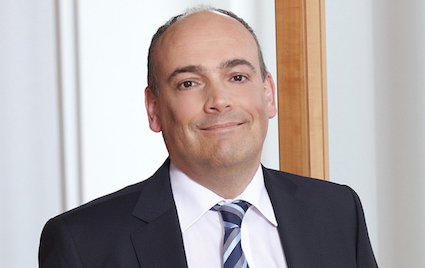Hapag-Lloyd: Climbing the ranks

Hamburg: Our most recent cover star on Maritime CEO magazine, Rolf Habben Jansen, is back in the new year outlining significant expansion plans. The new Hapag-Lloyd, which officially completed the merger with Chile’s CSAV in early December, will order new ships as soon as the second quarter this year as the German shipping line is pressing hard to close the gap with the big three containerlines.
“We are evaluating the different options we have. It’s not unlikely that we will be putting orders somewhere towards the end of second quarter or in the third quarter in 2015,” said Habben Jansen, the new Dutch chief executive officer of Hapag-Lloyd.
The acquisition of CSAV has elevated the company to the fourth largest liner company from sixth spot. While Hapag-Lloyd’s bigger rivals have invested aggressively in large scale vessels, the boss of the 200-strong fleet says he’s looking at something more than big ships.
Habben Jansen is mindful that the benefit of economies of scale could easily turn into diminishing returns when too many big ships are built.
“We also want to have flexibility over the year and to be able to deploy a bit more or a bit less on each of the trade depending on how strong they are and how we believe the near term outlook is,” Habben Jansen says.
The ability to deploy the tonnage not only on one trade but multiple trades is important, especially at a time when the shipping market is haunted by overcapacity for an exceptionally long period. “You don’t want to make very rigid deployments in the next five to 10 years,” he reckons.
After sinking in red ink for nearly four years, Habben Jansen expects the company to sail back to black numbers next year, helped mainly by the estimated $300m cost saving synergies generated from the merger with the South American line.
As for 2015, the Dutch national says it’s hard to predict as there are too many moving targets.
Habben Jansen believes that freight rates will increase moderately instead of significantly in the medium term as the fundamental market is going up while the profitability of shipping lines are still below par. The upward pressure on freight rates will come naturally from the rising costs stemmed from tougher environmental requirements, inland transportation bottlenecks as well as rising terminal charges.
At present Hapag-Lloyd is putting much of its effort on turning around its financials and materialising the cost-saving benefits from the merger.
However, it is still keeping its eyes open on two growing markets, intra-Asia trade and the inland logistics market on mainland China. Intra-Asia trade, which the liner company currently has a limited exposure to, is the market that Hapag-Lloyd wants to increase the most in the next five to 10 years.
As a door-to-door service provider, Habben Jansen also says the investment in inland logistics facilities in China “probably cannot be avoided”. [05/01/15]
